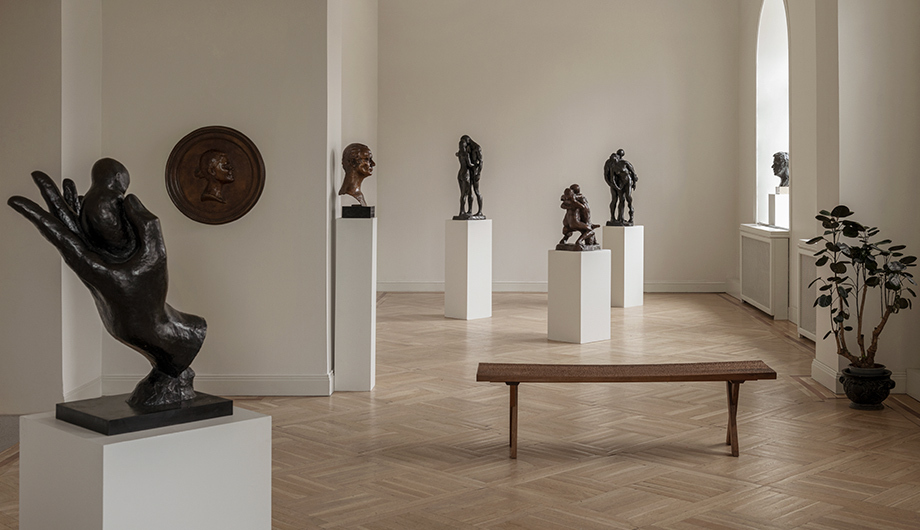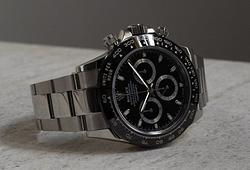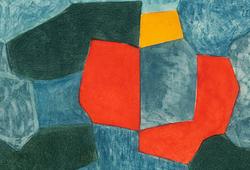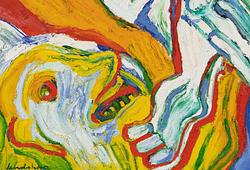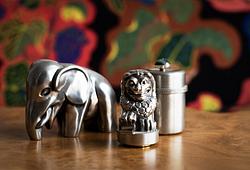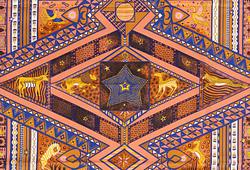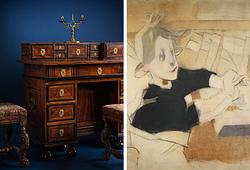Gudmar Olovson – From a personal perspective
What was it like growing up in the studio in Paris?
When our parents separated in 1981, our father created a home for us amongst, the plaster, the sculptures, the stairs, the dust, the wine glasses, the laughter and the tools. In the simplicity, there was the necessary. Nothing was missing.
There was the kitchen, the shower with hot water that lasted for 20 seconds thanks to the old pipes, beds here and there, an old sofa and a tiny garden. No TV!
Our dining room and living room, strewn with his creations, were constantly inhabited by our family, friends, models and personalities. We were surrounded by the busts that often portrayed the people who sat laughing among the candles, including ourselves! You can imagine how fun and simply magical it was. Not to mention the many wonderful parties we attended and arranged.
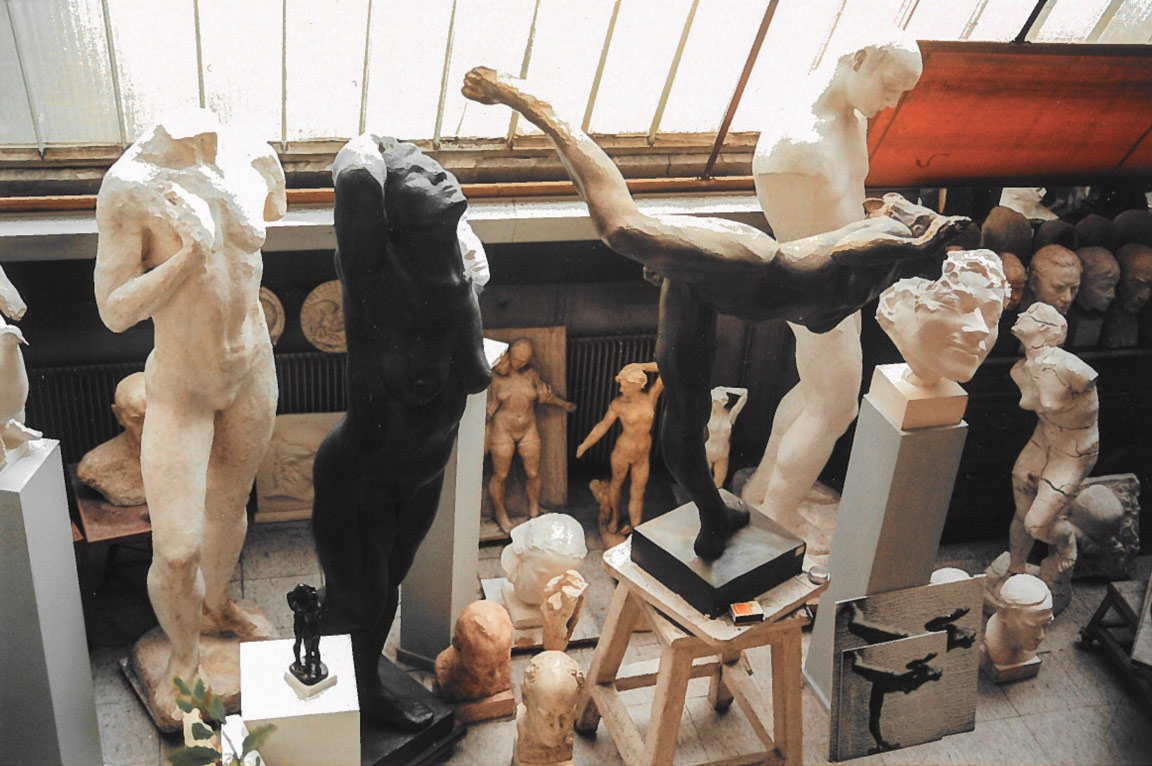
Can you tell us a little about the casting?
The process from initial thought to a finished cast bronze is a long, slow, expensive, fascinating and symbiotic collaboration between different people. To cast a bronze sculpture two different techniques are used, either the so-called lost wax technique or sand casting.
The circle of craftsmen around the sculptor consists of, the plaster caster, the one who enlarges and reduces, the alchemist, the caster, the one who then knocks out the bronze, the chiseler and the patinator. Every technology and profession requires decades of education, if not generations. What forms the great community and success, I would say, is everyone's pursuit of perfection, discipline and a sense of responsibility, as well as a respect for tradition and craftsmanship.
In addition to the periods and phases that the sculptor needs to ensure his inner vision is at one with the finished result, each artisan needs their time to achieve the same.
A critical stage to mention here is the creation of editions. The work will be marked with signature, casting stamp, and edition according to a deontological code during the process. After many excessive editions at the beginning of the 20th century, in 1981, requirements were introduced in France that today apply within European law, i.e., limiting editions and introducing numbering. Today, if a work is to be called an original, the sculpture may be cast in eight copies + four pieces "Épreuve d'Artiste" EA (The artist's edition). So older sculptures from my father can have slightly larger editions, and sometimes smaller. Prior to 1981, it was up to the artist.
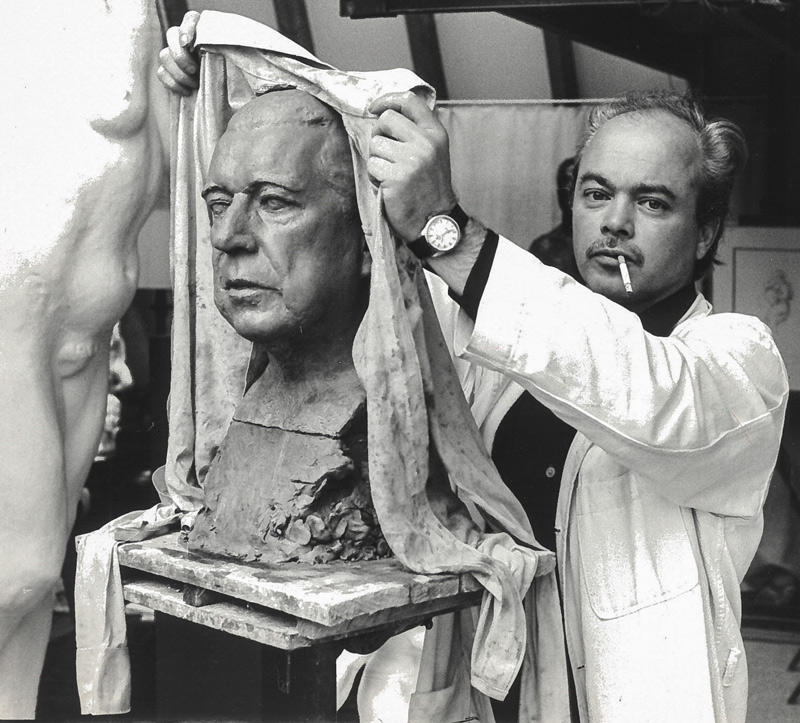
Susannes favourites
Gudmar Olovson From a personal perspective
Susanne Olovson, daughter of Gudmar Olovson, tells us about growing up in his studio and highlights a few of her favourites in the Online only auction.
How would you describe your father’s art?
– Always with the human in focus and often with an intense energy that invites us to reflect upon honesty, beauty and truth.
His inspiration can, first, be traced to ancient Roman and Greek sculptures. It then spans from that time's classic figurative creators to creators in the same spirit that he got to live with and learn with during his youth in Sweden, such as his own grandmother, the sculptor Lisa Pripp Ouchterlony and his teachers at the academy Stig Blomberg and Bror Hjort. And then, of course, the circle he came to live amongst in Paris.
Inspiration was also drawn from happy personal memories and insights, as well as from lessons learned from personal disappointments or injustices that others have suffered. For my Father, sculpture was about the expression of poetry through clay. His art is not about figuration, more interpreting the mood expressed by a body; the subtle hint in a facial expression and even the implicit message in a particular pose. The viewer is encouraged to explore how he refrains from ending certain extremities and instead brings out an unspoken feeling, free for us to interpret.
The final creation interweaves the four elements of nature; the clay he uses, the fire in which the work is cast, the water that purifies the metal and finally, the air the sculpture lives in.
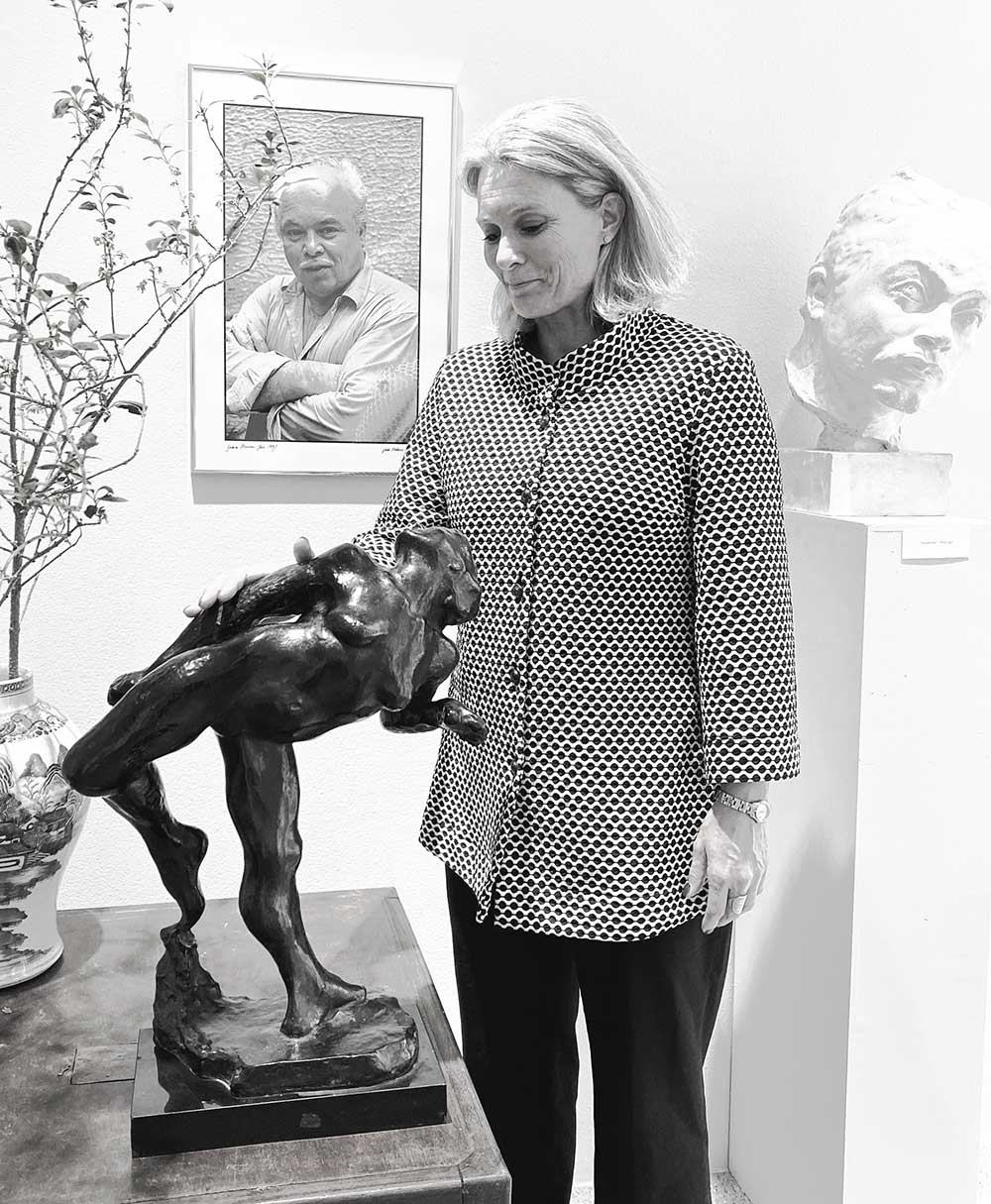
A group of four sculptures:
La Concorde, Torse dans L'espace, Captivité och Femme Oiseau blessé.
He fully masters the anatomy. They all have secure footholds, keep the balance, there is a sense of power balancing with a need to flood, and the proportions are natural. Each one of the sculptures is its own story, beyond its appearance and relationship to everything itself.
Till ”Torso in space” To ”Captivity”
Till ”Wounded woman bird” Till ”Concorde”
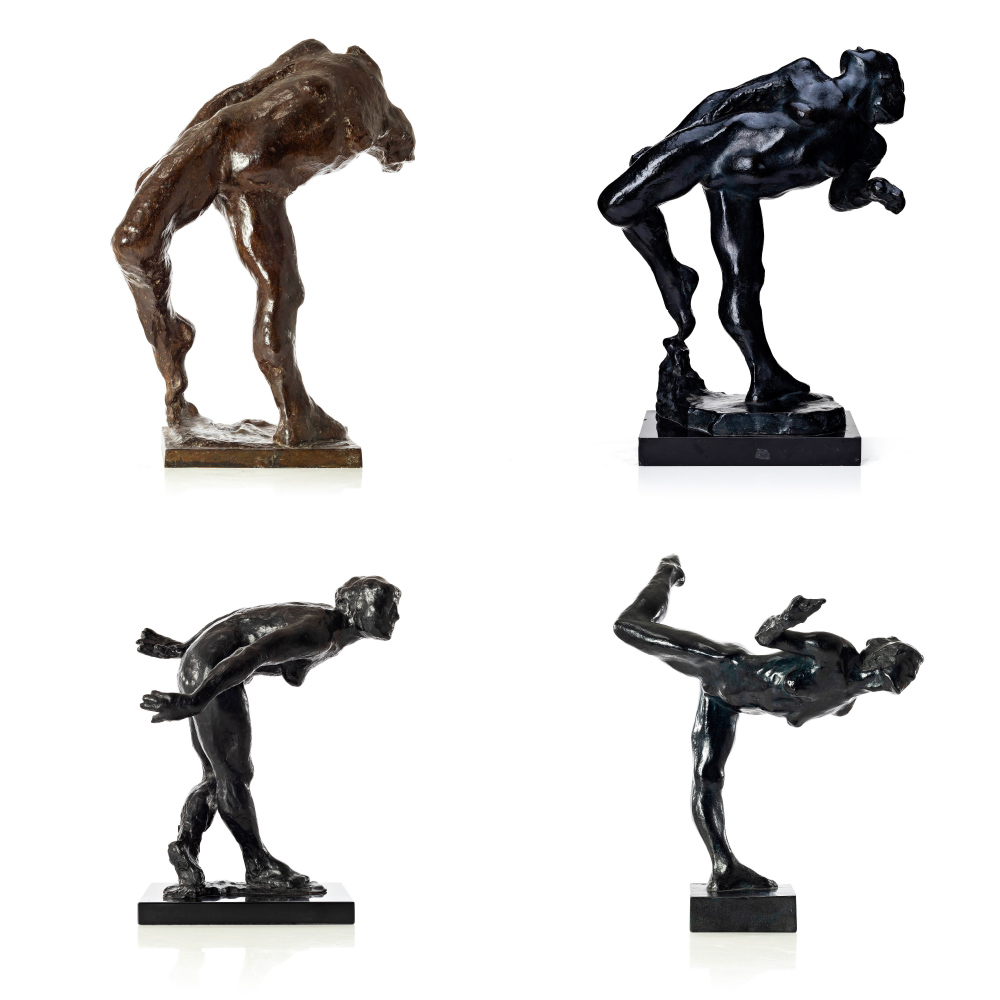
“Le poulain (Foal)”
The more I look at the Foal the more I respect how he masters life… now and here… as it is, the truth in its beauty.
To the sculpture

”Birgitta”
”Birgitta”, admittedly our Mother, but here also a tribute to a strange specimen of a woman. A beautiful, adventurous, proud, knowledgeable, faithful model where the artist also portrays the one he loves, which perhaps gives the work an extra dimension.
To the scupture
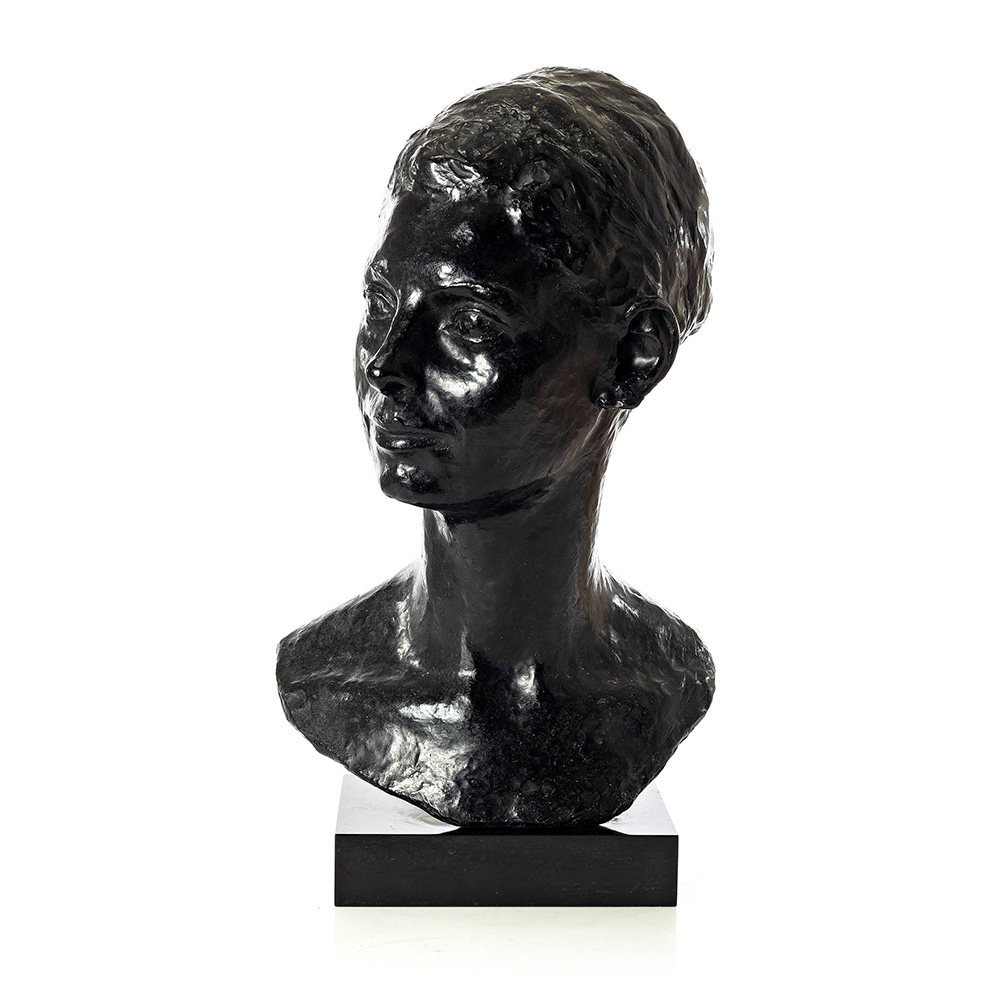
”L'élan (The Stride)”
Although he is described as a classic, there are several works that I know are extremely modern. One of them is l´Élan. The next androgynous, inseparable in time and space, driven by will, it stands stately before the coming.
To the sculpture

Bid on the objects

Estimate
120 000 SEK

Estimate
60 000 SEK

Estimate
260 000 SEK

Estimate
70 000 SEK

Estimate
140 000 SEK

Estimate
45 000 SEK

Estimate
265 000 SEK

Estimate
70 000 SEK

Estimate
180 000 SEK

Estimate
100 000 SEK

Estimate
90 000 SEK

Estimate
40 000 SEK

Estimate
20 000 SEK

Estimate
55 000 SEK

Estimate
45 000 SEK

Estimate
65 000 SEK

Estimate
140 000 SEK

Estimate
35 000 SEK

Estimate
195 000 SEK

Estimate
120 000 SEK

Estimate
95 000 SEK

Estimate
65 000 SEK

Estimate
130 000 SEK

Estimate
100 000 SEK

Estimate
75 000 SEK

Estimate
130 000 SEK

Estimate
2 900 000 SEK

Estimate
150 000 SEK

Estimate
290 000 SEK

Estimate
90 000 SEK

Estimate
140 000 SEK

Estimate
235 000 SEK

Estimate
15 000 SEK

Estimate
140 000 SEK

Estimate
50 000 SEK

Estimate
1 500 000 SEK

Estimate
40 000 SEK

Estimate
120 000 SEK

Estimate
190 000 SEK

Estimate
350 000 SEK

Estimate
30 000 SEK

Estimate
285 000 SEK

Estimate
175 000 SEK

Estimate
250 000 SEK

Estimate
190 000 SEK

Estimate
250 000 SEK

Estimate
235 000 SEK

Estimate
40 000 SEK

Estimate
250 000 SEK

Estimate
295 000 SEK

Estimate
19 000 SEK

Estimate
190 000 SEK

Estimate
150 000 SEK

Estimate
125 000 SEK

Estimate
175 000 SEK

Estimate
65 000 SEK

Estimate
85 000 SEK

Estimate
25 000 SEK

Estimate
55 000 SEK

Estimate
65 000 SEK

Estimate
35 000 SEK
